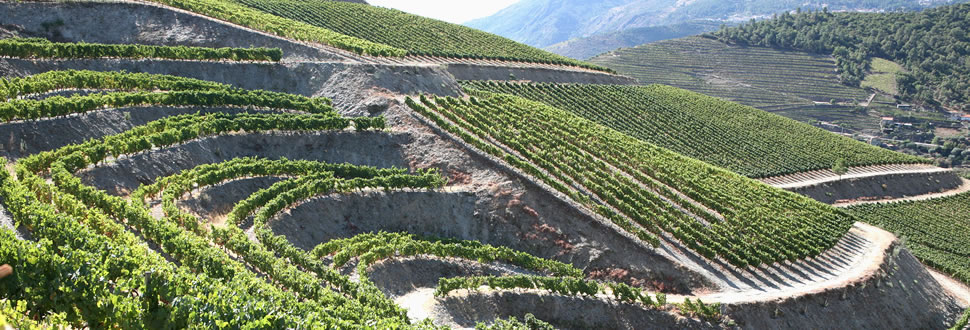Port is the most heavily regulated wine in the world. In order to maintain high-quality levels, there are strict controls on many aspects of growing and production. Vintage port the pinnacle of port production, but is not made every year. And, in some vintage years, only two or three producers “declare."
It is very rare that two consecutive vintages are widely declared. But that is the case with 2016 and 2017. Though very different from each other, both years produced exceptional fruit.
I recently had the opportunity to taste 16 ports from the 2017 vintage with the producers. It was an epic lineup of wine. In today’s article, I’ll discuss the 2016 and 2017 vintages in general, with an emphasis on the latter. In my next article, we’ll dive into those 16 wines.

One of three Fonseca vineyards in the Douro Valley
2016 Vintage
2016 got off to a slow start, due to wet, chilly weather. As the growing season progressed, it warmed up, actually getting too hot on occasion. [When vines sense they may dehydrate in excess heat, they shut down for the day. That stops ripening.] Fortunately, Fall was good and long. The vines were able to catch up and produced properly ripe, balanced, deeply flavorful fruit. The Port producers call it a year of "elegance and finesse."
2017 Vintage
2017 was hot, really hot. Carlos Agrellos, technical director for Quinta do Noval, says “2017 was very different from 2016 in virtually all respects, except for a hot summer and dry harvest. June was the hottest month since 1980, with daily highs between 104 and 111 degrees". Fortunately, since the season had started early and warm, any suspension of vine activity in June didn’t have a negative effect on ripening overall.
Only 12” of rain fell in the Douro during 2017, whereas there’d normally be at least 24”( and might be as much as 72” in some areas). Adrian Bridge, CEO of The Fladgate Partnership pointed out that the Douro Valley has been getting drier since the early 1970s. The Douro itself, which has been dammed, is now more a series of lakes than an actual river.
The vintage ran at least 15 days early all year. Bud break was March 14-22, flowering May 8-15, veraison June 19 - July 11. Harvest began on August 17 for the white grapes, August 21 for reds. And harvest had wrapped up by the third week of September, which is only the beginning of harvest in many years.
The heat and dryness could be devastating in some places. But Port vineyards are full of old vines with very deep roots which are more heat tolerant, require less moisture, and have deep roots for finding what they do need. Nonetheless, between the heat and dryness, raisining was a risk in 2017. Producers picked early, sorted carefully, and limited production levels to maximize quality. As a result, the wines are exceptionally good and are, as the Port producers say, "classic, old-school, vintage ports.
Vintage Port in the 21st Century
Port has been steadily improving overall in the past couple of decades. Dominic Symington, director of Symington Family Estates, points out that “the quality of viticulture is light years ahead of where it used to be. The quality of the fruit is absolutely outstanding.”
This advance in the vineyards has also led to vintage port being drinking well in its youth now, though it continues to age well too. Many of the 2017 Ports I tasted aren’t even released wines yet, but all are are extremely approachable. You could drink them happily now, if not for the knowledge that they’ll be even better with time.

2016 Vintage Port Availability
JJ Buckley has several 2016 Vintage Ports in stock and more on the way, including some magnums. Here are links to the 750s.
2016 Quinto do Noval Vintage Port
2016 Warre's Vintage Port (#16 on Wine Spectator's 2018 Wines of the Year list)
2016 Fonseca Vintage Port
2016 Taylor Fladgate Vintage Port
JJ Buckley guest blogger Fred Swan is a San Francisco-based wine writer, educator, and authority on California wines and wineries. His writing appears in The Tasting Panel, SOMM Journal, GuildSomm.com, Daily.SevenFifty.com, PlanetGrape.com, and his own site, FredSwan.Wine (formerly NorCalWine). He teaches at the San Francisco Wine School. Fred’s certifications include WSET Diploma, Certified Sommelier, California Wine Appellation Specialist, Certified Specialist of Wine, French Wine Scholar, Italian Wine Professional, Napa Valley Wine Educator and Level 3 WSET Educator. He's twice been awarded a fellowship by the Symposium for Professional Wine Writers.